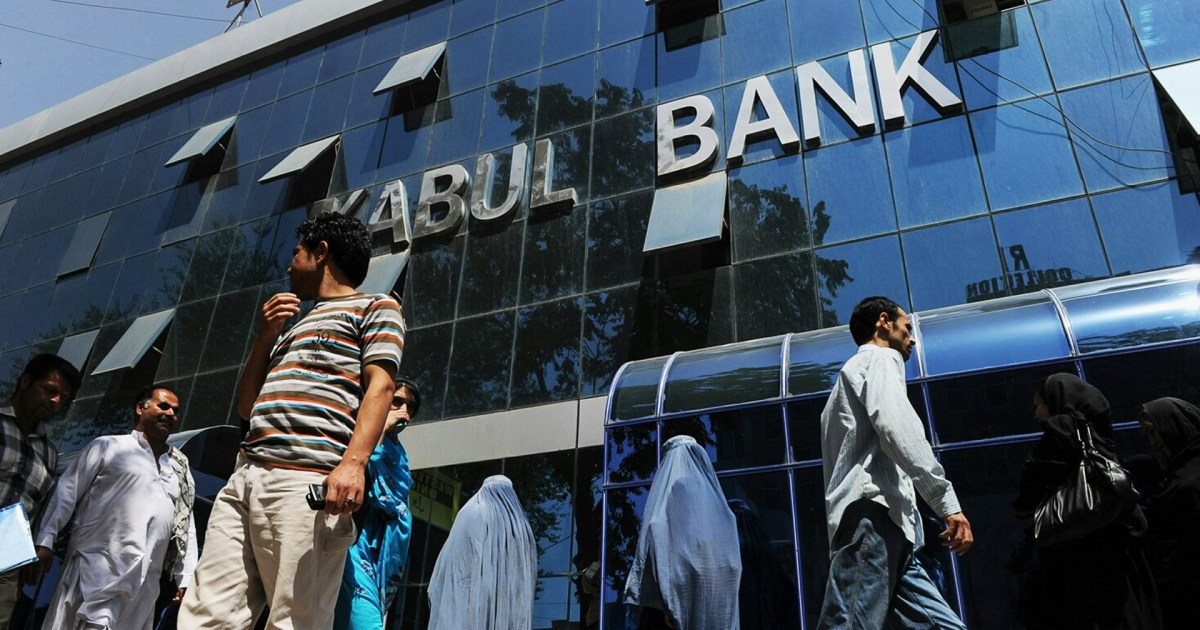Kabul Bank - which was at the center of the economic scandal in 2004 - was founded by an Afghan businessman named Sherekhan Fernoud, who was famous in the world of poker, and had made his way in the world of finance and economics since he was a student in Moscow in the eighties when he established a system for transferring money to and from Afghanistan with nominal amounts.
After establishing and participating in several exchange and money transfer agencies in different countries, he returned to Kabul to take over the establishment of the management of the largest private bank in the history of Afghanistan.
According to Dargo Caius, head of the investigation committee (the Independent Commission for Monitoring and Evaluation of Anti-Corruption), Fernoud fled the Russian Federation because the authorities were pursuing him for illegal banking activities, money laundering and organized crime gangs, information that had not yet reached the Afghan authorities.
The documentary follows the role of Sherkhan Fernod and his partner Khalil Ferozi - who was entrusted with the task of CEO of Kabul Bank - in managing the embezzlement operations that exceeded one billion dollars, as the Kabul Bank managed to expand and spread inside Afghanistan, and opened branches in most of the states.
The two men sought to attract new shareholders, bringing their number to 16, and among them were some political elites in Kabul who wield great influence and power, most notably Hussein Fahim, brother of former Vice President Mushir Fahim, and Mahmoud Karzai, brother of former President Hamid Karzai;
This gave the bank significant political immunity.
The film shows that Kabul Bank was able to secure annual contracts to pay the salaries of civil servants and the salaries of the police and the army, which are funded internationally, and through attractive advertisements, it was able to attract one million customers to the bank.
case explosion
However, the expansion of Kabul Bank and its success in bringing in the money of Afghan citizens did not last long;
In October 2009, the Afghan intelligence and the National Directorate of Security sent a report about it to the Central Bank and the Supreme Oversight Office specialized in combating corruption in Afghanistan. The bank case exploded in February 2010 after the publication of an investigation in the "Washington Post" in which the author of the article revealed the properties Sherkhan Farnaud and some of the shareholders of Kabul Bank in the Dubai real estate market, and other investments.
The Afghan government - according to the testimony of the governor of the Central Bank of Afghanistan, Abdul Qadeer Fitrat (2007-2011) - obtained most of the information regarding the Kabul Bank's investments through the "Washington Post" article and the US embassy.
The US intelligence services also noticed early on the smuggling of money through Kabul Airport.
A leaked document in October 2009 reveals that the US ambassador sent the US administration some details about smuggling money in different currencies through Kabul airport and through the "Bamil" airline owned by the head of the Kabul Bank and influential Afghans.
And about the ways of smuggling money, Keos reveals that the money stolen from the Kabul Bank was very large, and that large bags were used to smuggle it out of Afghanistan, and they also stuffed the money in food boxes.
They were also shifting misappropriated banknotes inside passengers' dinner plates, said Judge Eva Joly, a member of the investigative committee of the Independent Anti-Corruption Monitoring and Evaluation Commission.
The beginning of the collapse
The documentary is based on a report issued by the United States Institute of Peace in Washington, which reveals that the head of the Kabul Bank at the time began to lose control of the bank in the summer of 2010 due to his absence from Kabul, as the conflict raged between him and Feruzi, who was planning to control the bank.
As a result of the conflict between the two men, Sharikhan resorted to the Americans and exposed the embezzlement scheme to them, and told them about most of the illegal activities of the bank, real estate, and loans without bonds that had been granted to shareholders in millions of Afghani citizens’ deposit money. In August 2010, the Governor of the Central Bank dismissed Fernod and Feruzi and opened an investigation into The case that worried and angered Afghans who deposited their money in the bank.
Investigations into the collapse of Kabul Bank led to the discovery of the embezzlement, which amounted to nearly $900 million, and the names of the bank's shareholders, the percentages of their shares and the amounts of loans they obtained personally or to finance their investments.
However, the political elite of the shareholders was not summoned to appear in court, which reinforced the feeling of impunity.
The documentary indicates that in March 2013, the Special Court in Afghanistan issued a sentence of 5 years in prison for Fernod and Ferozi, convicting them of breach of trust and ordering the payment of the stolen money.
And the case file was reopened during the era of President Ashraf Ghani, renewing the sentence of the two to 10 years in prison on charges of disorder and money laundering, obligating them to pay debts and fines incurred by them, and freezing the assets of those who looted Kabul Bank from other shareholders.
However, a year after the ruling was issued, Fayrouzi appeared with government officials on television to lay the foundation stone for the construction of the smart city project for residential units, after a settlement was made between him and the government, which angered the Afghans, so the president intervened and ordered that Fayrouzi be returned to prison and cancel the project.
In August 2018, Sherkhan Farnod died in Bagram prison at the age of 57 due to a heart attack, and his partner, Feruzi, was released in 2019.

